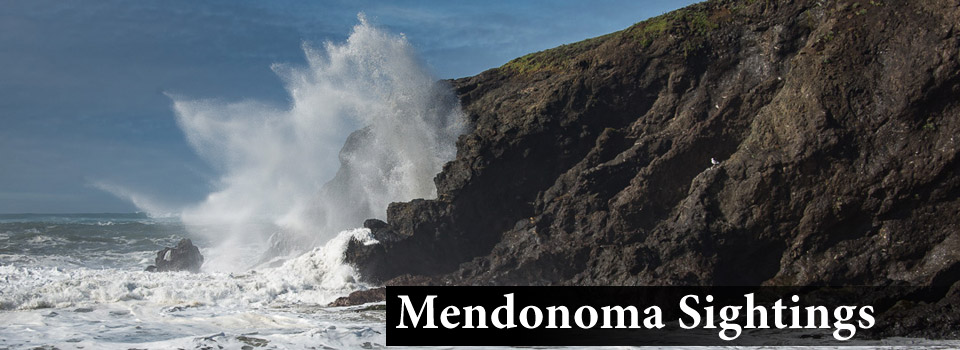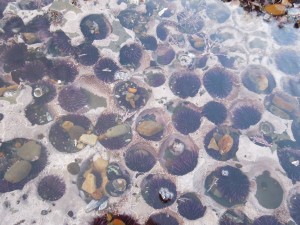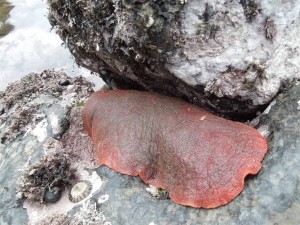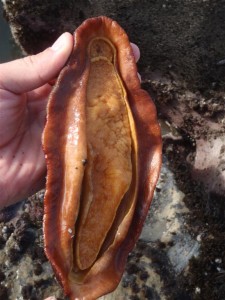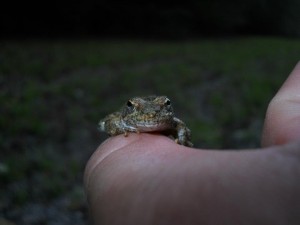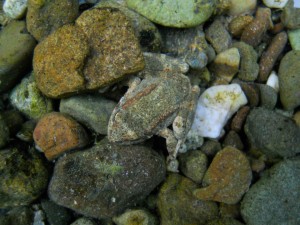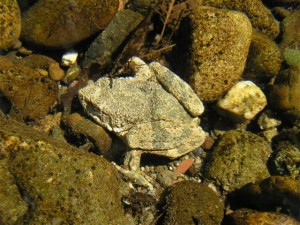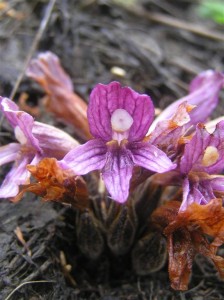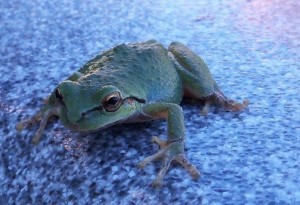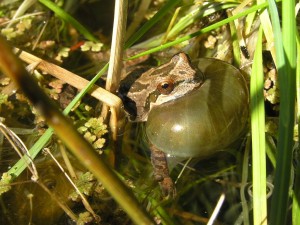The Stornetta Public Lands bring us many wonders and here's another one - a Purple Sea Urchin "meadow." Peter Baye was exploring the tide pools of the Stornetta Lands at low tide recently when he photographed these underwater beauties.
These Sea Urchins have excavated pits in sedimentary rocks and live in a big community. They grow to about four inches across and can live up to 70 years. Their Latin name is a tongue twister - Strongylocentrotus purpuratus. They are found off the eastern edge of the Pacific Ocean, from Ensenada, Mexico to British Columbia, Canada.
Thanks to Peter for allowing me to share his photo with you here.
